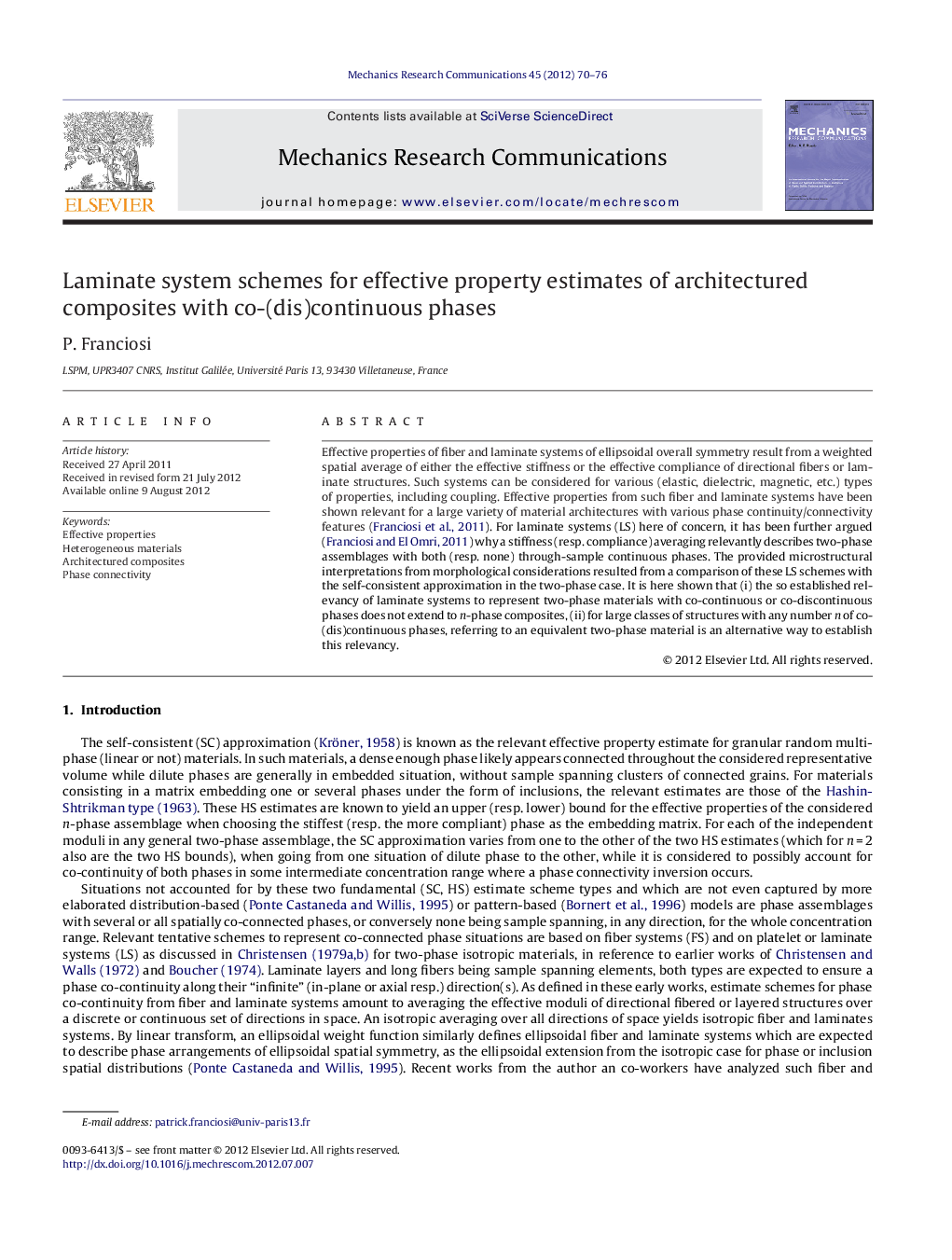| Article ID | Journal | Published Year | Pages | File Type |
|---|---|---|---|---|
| 799171 | Mechanics Research Communications | 2012 | 7 Pages |
Effective properties of fiber and laminate systems of ellipsoidal overall symmetry result from a weighted spatial average of either the effective stiffness or the effective compliance of directional fibers or laminate structures. Such systems can be considered for various (elastic, dielectric, magnetic, etc.) types of properties, including coupling. Effective properties from such fiber and laminate systems have been shown relevant for a large variety of material architectures with various phase continuity/connectivity features (Franciosi et al., 2011). For laminate systems (LS) here of concern, it has been further argued (Franciosi and El Omri, 2011) why a stiffness (resp. compliance) averaging relevantly describes two-phase assemblages with both (resp. none) through-sample continuous phases. The provided microstructural interpretations from morphological considerations resulted from a comparison of these LS schemes with the self-consistent approximation in the two-phase case. It is here shown that (i) the so established relevancy of laminate systems to represent two-phase materials with co-continuous or co-discontinuous phases does not extend to n-phase composites, (ii) for large classes of structures with any number n of co-(dis)continuous phases, referring to an equivalent two-phase material is an alternative way to establish this relevancy.
► For two-phase materials, a common characteristic has been established between self-consistent and laminate system schemes of property estimates. ► The comparison allowed identifying which phase connectivity features are represented by the laminate systems. ► We here establish the extension to n-phase materials from referring to equivalent two-phase materials.
